Dear Artist,
Yesterday, Charlotte Hussey wrote, “I’m not a painter, but a poet. I’m writing more and more about nature. I’ve just returned from the woods near the Vermont border where I was working on a sequence of poems for a tree alphabet. Do you have any tips for working in nature? With trees in particular? I’m doing drawings of the trees I’ve identified, just to feel them better and to get away from always having to rely on words. I think drawing them makes me take their shapes into my body more and helps me feel them more deeply.”
Thanks, Charlotte. The painter Peter Ewart used to say, “To be alone with nature is to be one with nature.” I find it valuable, in solitude, to anthropomorphize natural objects, including trees. This means to attribute human characteristics to them. Trees of different species, for example, droop in sadness, empathize with one another, pray to the sky, take joy in the wind. Some trees reach out, others are smug or private, still others are exuberant or voluptuous. Understanding trees is a vocation in itself and your twin approaches of both sketching and writing is a good way to find their potential.
A painter or a poet would do well to look at what Vincent Van Gogh had to say about trees: “They are constantly occupying my thoughts,” he wrote in 1889. Van Gogh’s cypresses, for example, twist, curl, and sinuously flicker like candles in the Mistral — the northerly wind of southern France. Like an upside-down explanation point, they punctuate. “As beautiful in line as an Egyptian obelisk,” wrote Vincent, “A splash of black in the sunny landscape.” Anyone who has ever painted in Provence knows the value of the cypress as a compositional ploy. Vincent’s olive trees, on the other hand, are angular and anguished, as if hurled to the ground like so many jacks.
More than anything trees are metaphors. Firmly rooted, genuinely patient and content, willing to undergo insult and humiliation, they also open themselves to all manner of creatures and make a home for many. These oldest of living beings have nobility in every leaf. They bring warmth to the northern cabin, and shade to the southern traveler. Daily, they do the breathing for our increasingly fragile planet. If they were to disappear, we would soon be dead. To honour trees is to grasp life.
Best regards,
Robert
PS: “I think that I shall never see
A poem lovely as a tree.”
(Joyce Kilmer)
Esoterica: How to Draw Trees by Frederick J. Garner is just one of the many excellent references available. Also, field sketching with an identifying guide-book gives the joy of private discovery. The idea is to claim the anatomy and spirituality for yourself. Our eyes, when united with our hearts, make one terrific organ. It seems to me that Vincent had no guide but the trees themselves (and a profound admiration for Velasquez). That was enough.
This letter was originally published as “Trees” on July 15, 2005.
Have you considered a Premium Artist Listing? With each letter, an artist is featured at the bottom of this page. The Premium Artist Listings are a means of connecting artist subscribers through their work. Proceeds from each listing contribute to the production of The Painter’s Keys.
“Look at the earth crowded with growth, new and old bursting from their strong roots hidden in the silent, live ground, each seed according to its own kind… each one knowing what to do, each one demanding its own rights on the earth… So, artist, you too from the deeps of your soul… let your roots creep forth, gaining strength.” (Emily Carr)
Featured Workshop
You know your paintings are good but you want them to be great. You want to be able to connect to a deeper source within you and then put that onto your canvas or paper.
To become aware of your depth, calm and genius that lives within your heart.
You will discover ways to go within your heart and soul in order to tap onto that special energy that is yours and yours alone.
This workshop will be a live virtual event. I will be there with you during the entire four days. I can’t wait as I am excited. Please email me if you have any questions….gwen@gwenfox.com
September 14 – 17, 2020, Location…Online
Register here: https://gwenfox.com/retreat/painting-deep-from-the-heart/
Featured Artist
I am a painter. I am delighted to be a painter.

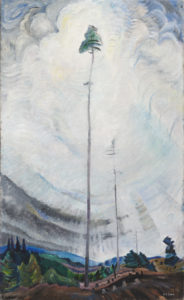
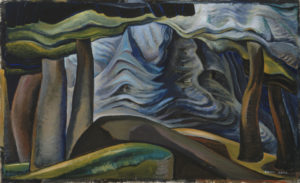
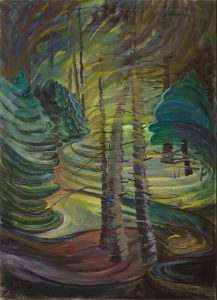
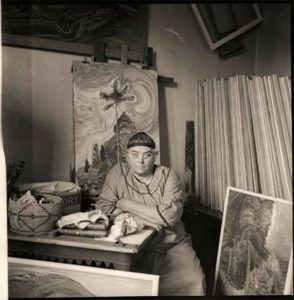
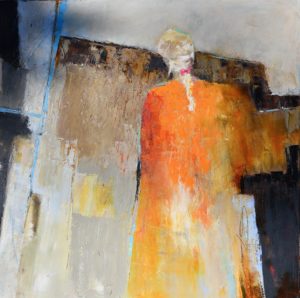
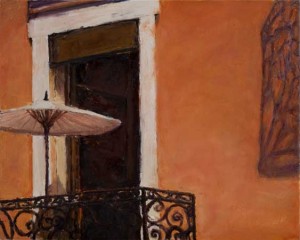



26 Comments
I have a friend who said, “ I never know what anything looks like until I draw it.” So true. I’ve been obsessed with combining figures with trees lately. I’ll try to post one.
That is a paraphrase from the Zen of Seeing by Frederick Franck. “I have learned that what I have not drawn I have never really seen…”
Thank you sara for the opportunity to share
Here is the link on FB and instagram https://www.instagram.com/p/CCrIWXKJ7lw/
https://www.facebook.com/photo.php?fbid=10158282484535275&set=pb.625225274.-2207520000..&type=3
Yes, they do our breathing for us, producing a good portion of our oxygen and sequestering the CO2 from our fossil fuel burning engines with which we are turning our planet into an unihabitable hothouse,meanwhile we are busy cutting them down and deforesting the Amazon.
warren https://warrencriswell.com/watercolors.html
Trees! I have a fascination with each season with trees, how they withstand ALL the elements and human interaction. The beauty in winter where the ice water finds every single branch and transforms it into an ice sculpture of mesmerizing beauty. Spring, green buds forming new life. Summer, full, lush leave of varying colors of greens, shading the deck, a space of grass for a picnic, making the best painted shade on the concrete; and fall, changing to the most beautiful colors of reds, golds, browns and that greens that just don’t want to go away. Have you ever just stopped and listened to the singing of the trees, the saying, the togetherness; and the families that make trees their homes.
Trees! An observation by Vera Banks-Fernandes.
As a calligrapher and illustrator I’m always looking for words, and love it when they work together. At the John C. Campbell Folk School in Brasstown, NC, I’ve been teaching a few classes that bring these together. The first is Botanical Books, team taught with illustrator Redenda Soprano, where we work on really seeing and expressing the plants we are studying, and combining them with words, our own or other people’s, to make small artist’s books. The second, a Tree Journal class is team taught with Carol Parks, who is a dendrologist and illustrator. In both classes we study the plant forms in detail by drawing and painting them, and adding text, either scientific or poetic, to expand the experience for the viewer. I will be teaching a similar class at Ghost Ranch in New Mexico next May. Sadly, they have been cancelled this year, but are on the agenda for 2021. They are a high point of my year.
You can see some of my attempts on my website, cicaledesign.com
Hi Annie- so delighted to see you here. Asheville, Sally Gooze friend. I took your course at Olli. I’d like to receive info about your Ghost Ranch workshop in May.
I’ve found it best to draw trees on a windy day to capture their true nature
I remember seeing VanGogh’s cherry trees in blossom for the first time in the VanGogh museum in Amsterdam and standing mesmerized at how vibrant and lively they seemed. It’s almost impossible to do a plein air piece without a tree in it. When I take the time to understand their nature, they always add a very important grounding stabilizing element to the work.
I love drawing and painting trees … they are like friends to me. In the Fall i paint watercolor studies of individual leaves … the each have their own personality and I love getting to know them. Once I painted a large, beat-up, maple leaf. It had such a strong personality I called the painting “General Bigleaf.” I had the painting matted and framed and hung it at a local vineyard. One day a woman announced she had fallen in love with General Bigleaf and must take him home. Once in the spring someone brought me a large acorn which had been found along a forest path. It had a long root … about 6″ and a small stem about 3″ long with 3 tine perfectly formed oak leaves. I painted a study in watercolor which I loved and named it “Baby Oak Tree.” I took it home with me and my husband planted it in a large pot where it grew happily until one day a squirrel ate it. I was devastated … I felt as though I had lost a friend. I love trees!
Read Robert Frost’s poem. “Tree At My Window”. One of my favorites!
Ah, trees! Trees are the objects in painting that can be “indicated” with the simplest shapes and not labored around with. Even trees can be indicated by painting just their shadows and our minds will “see” tree, even though the tree doesn’t appear in the composition. Most of us have or have had trees around us and we are so familiar with them we see the shapes or masses and don’t have to think about them, but in paintings they can tell us the weather, season, geographical location and even emotions, if the artist desires!
Thank you Sara for choosing Emily Carr’s trees to accompany the writing. Ms Carr’s intimate familiarity with the spirit of trees was gained by living for long periods in the rough and dangerous virgin forests of British Columbia’s west coast. For anyone who has visited wilderness areas there, she captured the motion or stillness of the trees perfectly. My favourite historical Canadian painter and a feminist groundbreaker with her interpretations of Canada’s wild in the early 20th century!
Might check out “The Hidden Life of Trees” by Peter Wohllebem
Sara, Our 20+ year drought is devastating juniper trees growing at our Utah home. While sequestered this spring, I began painting Bristlecone Pine trees, the Nevada state tree, based on visiting them after a horrendous wildfire in 1980, which I covered as a journalist. Emily Carr’s paintings in this newsletter have inspired me to continue work on these precious trees. I am nurturing several seedlings of poplar, spruce and juniper in my own backyard and will study, draw and paint them. Your and Robert’s columns are always an inspiration!
The Overstory is a great read about trees; forest bathing, a topic to check out, The Songs of Trees also helpful. Old growth forests disappearing.
The Overstory by Richard Powers, is probably one of the best books I have ever read….simply stunning!
To put it simply, trees amaze and attract me constantly. For me, one of the most relaxing views is to look up into the leaves or needles of several crowns of trees how they interact with sunlight or wind high above me.
For those of you who like reading, this is my proposal: Peter Wohlleben, The Hidden Life of Trees: What they Feel, How they Communicate—Discoveries from a Secret World, trans. Jane Billinghurst. Foreword by Tim Flannery. Greystone Books, Vancouver and Berkeley, 2016.
We have many beautiful trees in my town in Ontario, Canada as do many communities. For many years we had a dedicated Tree Keepers Group, We did an inventory of the trees in our community, had a couple of trees entered onto a Historical Trees registry, sponsored a community favourite tree story contest (very successful–many enchanting stories), sponsored community events with speakers and hikes, made a tree walking tour map, and worked with the city as watch dogs to protect trees.
People wonder what on earth a tree keepers group does but now I wonder that more communities don’t have such a thing–trees are so important and so vulnerable. They need to be revered and protected. They hold our history and stories and nurture our
spirits.
As our first outing since covid we travelled to Revelstoke for work. Trembling aspens murmured start and stop conversations outside our window. With the aid of discovered surveyors ropes we climbed and pulled up a very steep fir covered ridge above the road we were working on. There in the thick organic forest floor were motel mushrooms. I love trees; they give and give.
As our first outing since covid we travelled to Revelstoke for work. Trembling aspens murmured start and stop conversations outside our window. With the aid of discovered surveyors ropes we climbed and pulled up a very steep fir covered ridge above the road we were working on. There in the thick organic forest floor were morel mushrooms. I love trees; they give and give.
I am the Lorax. I speak for the trees. I speak for the trees, for the trees have no tongues. And I am asking you, sir, at the top of my lungs. Oh please do not cut down another one.
Each early morning I search the trees just outside my house. Sometimes the does and their fawns are still asleep, sheltered under the drooping branches. In the afternoon breeze the tall pines whisper of the hawks’ flight and woodpecker’s progress. My trees are so important, and I take my job of caretaking seriously.
Dear artist friends, all who love art and express themselves through various media, or take time to read about, or listen to recordings about art! Well now – TREES – the most important living elements, besides animals, on this planet. Poetry will personalize them, the same way artists have been doing and will be doing. How important they are! Think of the variations of types, cousins of the North and the South, the East, and the West. I regularly walk the trails in the vicinity of Vienna, through the Viennese Woods, rich with birch-, beech-, and oak trees. I listen to their music as they shape the wind, the straight growing beech trees with their smooth bark are beautiful. If by chance I come across a beautiful young beech tree, slim and of elegant stature resembling a pretty young woman, I hug such a tree, expressing my love for this part of nature I’m lucky to encounter close to where I am staying at present. There’s something sacred in this ritual and I am very glad to agree with another talented artist, I’ve met recently: I agree wholeheartedly on this ritual with her.
Trees are poems, songs and even wisdom …which I discover when painting them. I am happy to share this En Plein Air tree painting video with you – Enjoy it Here: https://www.youtube.com/watch?v=FFJydvuzrLc
In my California suburban canyon nature is well groomed and at first glance hard to see. However routine my dog walk I try to notice what available
Nature there is however hidden at first. As my paintings have drifted somewhere to the space between abstract and figurative I began to notice
The patterns of tree bark on my walks. Some barks are tightly delineated and hard while other trees shed their wildly abstract surfaces a few times a year. They’ve become part of my paintings…part camouflage, part paint by number the closer you approach. Somewhere along the way I noticed these most mysterious entities seem to also have different surface temperatures – some barks much cooler to the touch. I’m still testing …